In November 1944, the Nazis established Ohrdruf south of Gotha, Germany. As a subcamp, Ohrdruf was located about 30 miles west of Buchenwald. Codenamed SIII, the Ohrdruf camp was established to supply forced labor to construct a route that would lead to a communications center in the basement of nearby Mühlberg Castle, located in the town of Ohrdruf. Prisoners were to connect the castle with a railway by digging tunnels through nearby mountains. The tunnels would also serve as an emergency shelter for the train that contained Hitler’s headquarters, the Führersonderzug, in the event of an evacuation from Berlin. Local civilians were hired to handle the dynamiting, while prisoners would come in behind to dig and pick up rocks. With poor working conditions and no protective gear offered, many prisoners suffered from serious injuries and often were killed in the process. The communications center, however, was never completed and the project was abandoned due to the advance of US troops.
By March 1945, the prisoner population in Ohrdruf reached 11,700. The prisoners included people of various nationalities—French, Belgian, German, Hungarian, Czech, Latvian, Italian, Russian, Ukrainian, Polish, and Yugoslav. In addition, the camp housed prisoners who the Nazis judged as anti-social, plus homosexuals and Jews. In early April, with the oncoming advance of Allied forces, the SS evacuated almost all of the prisoners in a death march to Buchenwald. Many prisoners who were too weak or ill to partake in the march were summarily killed.
Ohrdruf was the first Nazi camp to be liberated by US forces. On April 12, a week after the camp’s liberation, Generals Dwight D. Eisenhower, George S. Patton, and Omar Bradley toured the site, led by a prisoner familiar with the camp. Numerous corpses were found scattered around the camp grounds, lying where they were killed prior to the camp’s evacuation. A burned out pyre was discovered with the charred remains of prisoners, proof of the SS’s hurried evacuation and attempt to cover their crimes. Evidence of torture was present, and prisoners demonstrated for the generals various torture methods used by the guards. In a shed, a pile of roughly 30 emaciated bodies were discovered, sprinkled with lime in an attempt to cover the smell. Patton, a man privy to the violent scenes of war, refused to enter this shed as the sights and smells in the camp had previously caused him to vomit against the side of a building. German citizens from the nearby town of Ohrdruf were forced to view the camp and bury the dead, a practice that was later repeated in other camp liberations. Following the tour, the mayor of Ohrdruf and his wife were discovered to have hung themselves in their home.
-

Generals Dwight D. Eisenhower, George S. Patton, and Omar Bradley view charred remains in a crematorial pyre and bodies of prisoners killed prior to the SS evacuation of Ohrdruf. The National WWII Museum.
-

Generals Dwight D. Eisenhower, George S. Patton, and Omar Bradley view charred remains in a crematorial pyre and bodies of prisoners killed prior to the SS evacuation of Ohrdruf. The National WWII Museum.
-

Generals Dwight D. Eisenhower, George S. Patton, and Omar Bradley view charred remains in a crematorial pyre and bodies of prisoners killed prior to the SS evacuation of Ohrdruf. The National WWII Museum.
Following the generals’ visit to the camp, Eisenhower ordered all American units in the area and not engaged in frontline battle to be sent to Ohrdruf. He cabled General George C. Marshall, head of the Joint Chiefs of Staff in Washington, D.C., requesting that members of Congress and journalists be sent to liberated camps to witness and document the horrific scenes US troops were uncovering. Additionally, the generals discovered the prisoner who acted as their guide during their visit to Ohrdruf was recognized by another prisoner as a former camp guard, and was beaten to death.
-

Eisenhower's cable to General George C. Marshall requesting members of Congress and journalists to view newly liberated camps. Courtesy of Eisenhower Library.
-

A letter to Eisenhower from Patton describing the fate of their camp guide at Ohrdruf. Courtesy of Eisenhower Library.
The liberation of Ohrdruf opened the eyes of many Americans, soldiers and civilians, to the barbaric conditions innocent people faced under Nazism. American troops would move on to discover and liberate multiple camps, including Dora-Mittelbau, Dachau, Mauthausen, and Buchenwald. Elie Wiesel, author of Night, was imprisoned in Buchenwald at the time of the camp’s liberation. As more camps were uncovered by Allied forces, it became evident to the world that the Third Reich had committed unprecedented atrocities everywhere the regime had reigned. Following the discovery of Ohrdruf, Eisenhower stated simply but profoundly:
“We are told the American soldier does not know what he is fighting for. Now, at least, we know what he is fighting against.”
General Dwight D. Eisenhower
This article is part of an ongoing series commemorating the 75th anniversary of the end of World War II made possible by Bank of America.
Connie Gentry
Cite this article:
MLA Citation:
APA Citation:
Chicago Style Citation:
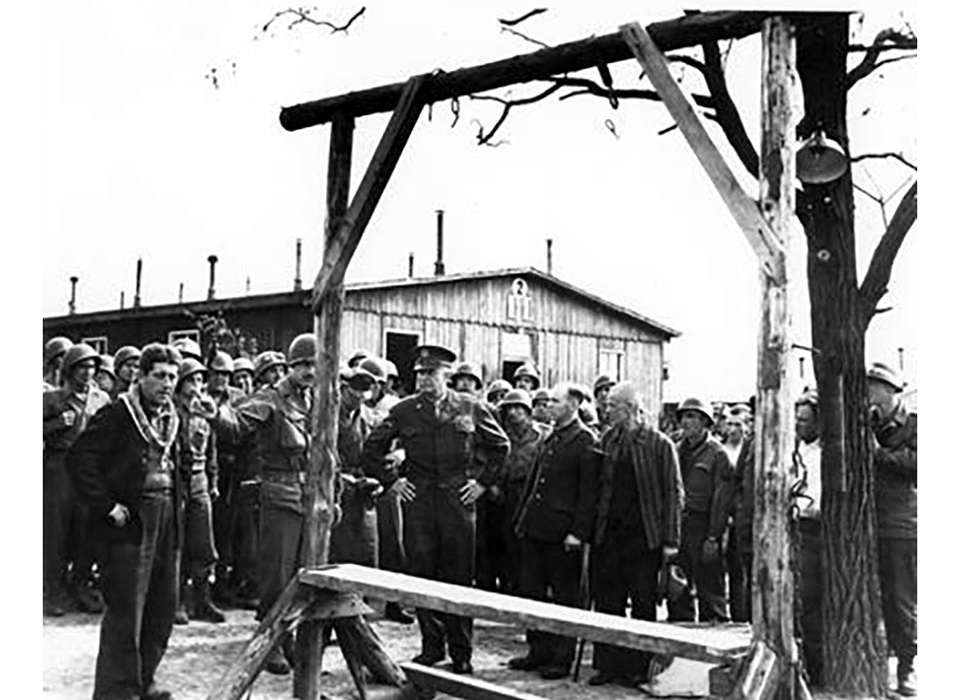
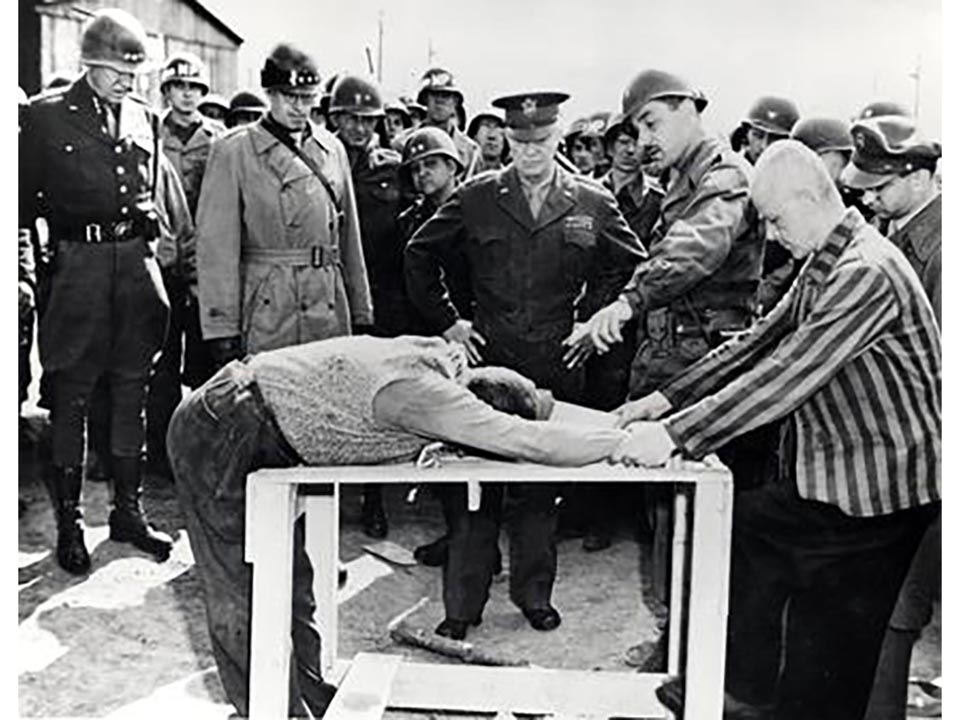
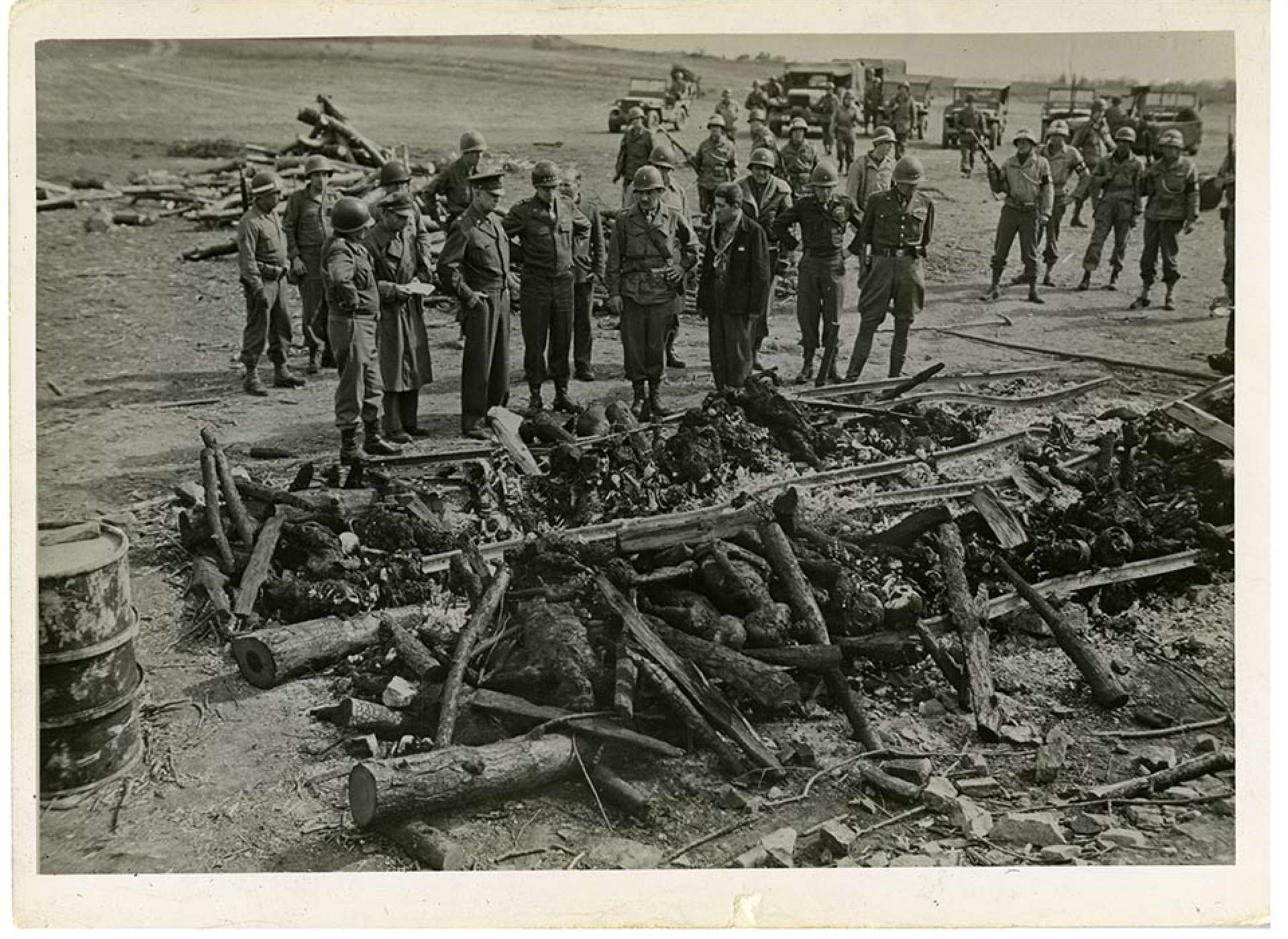
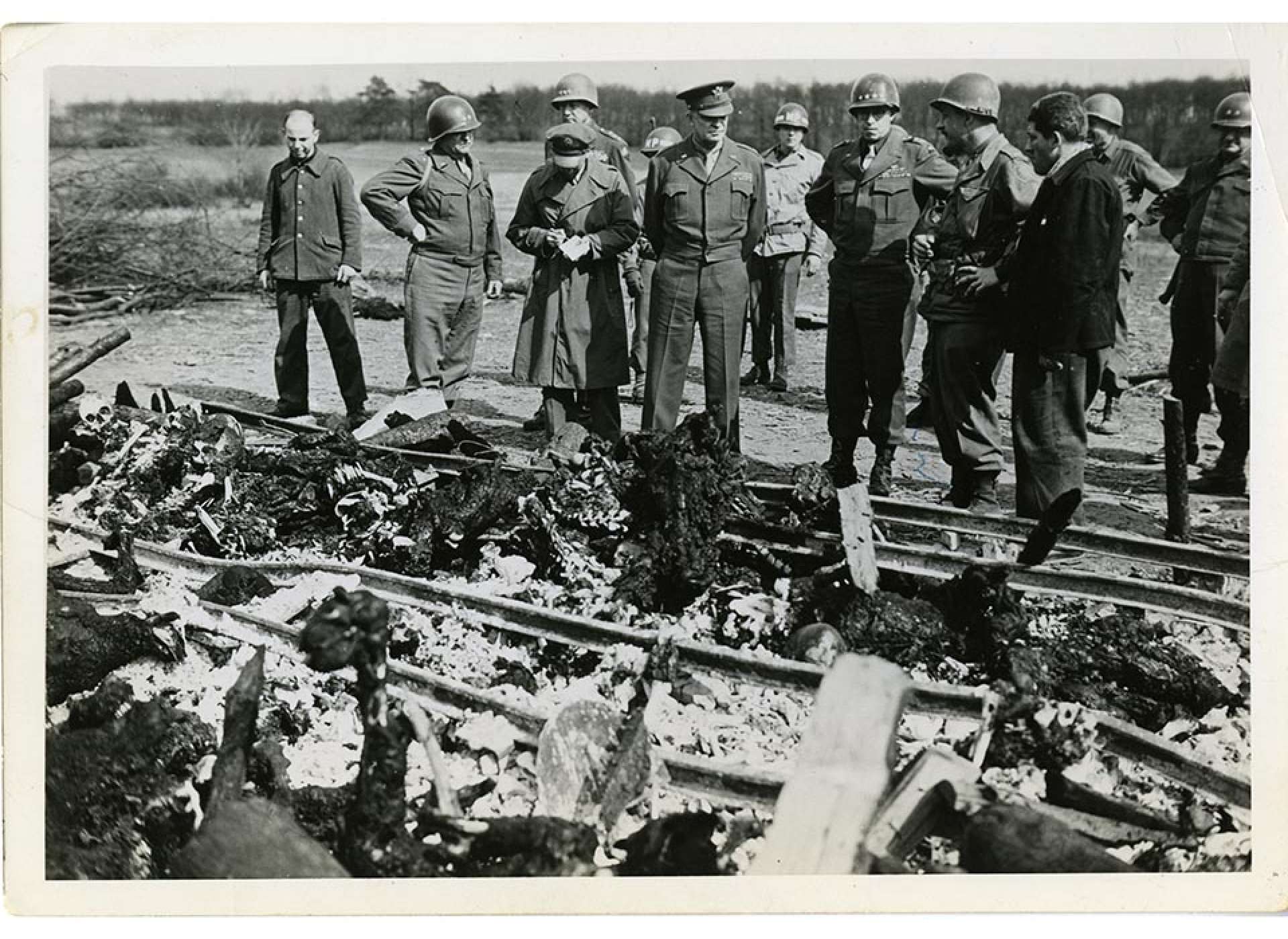
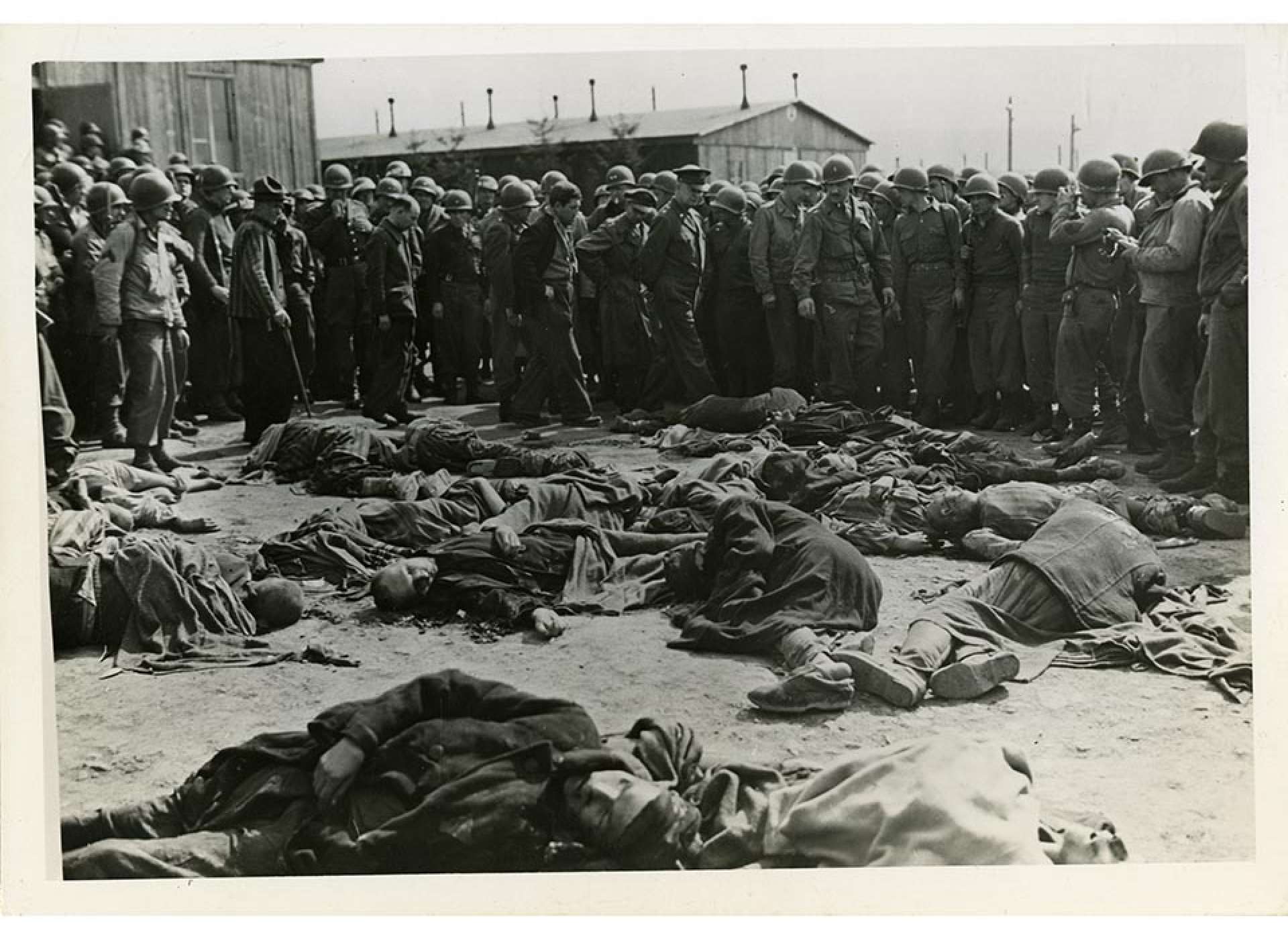
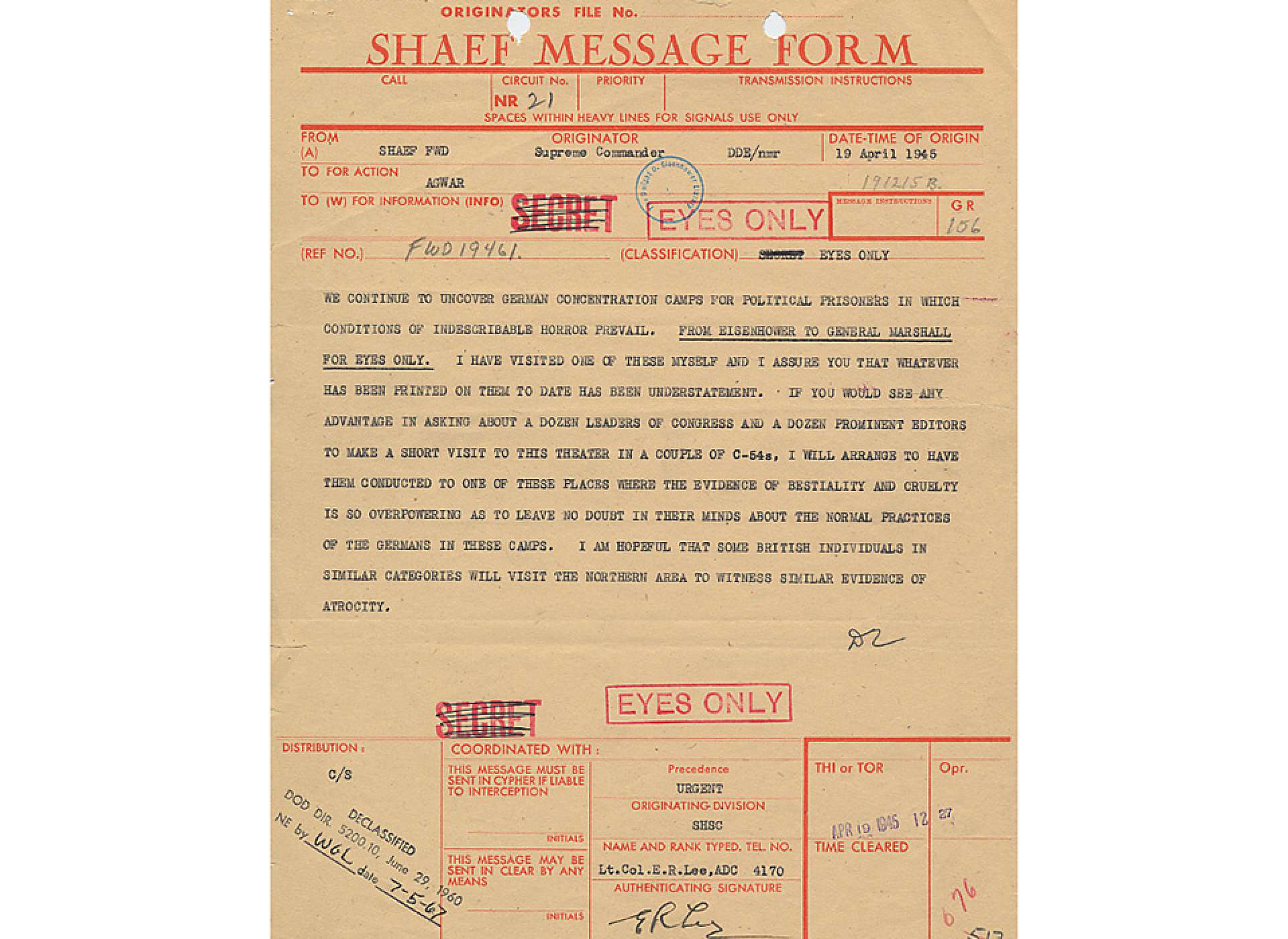
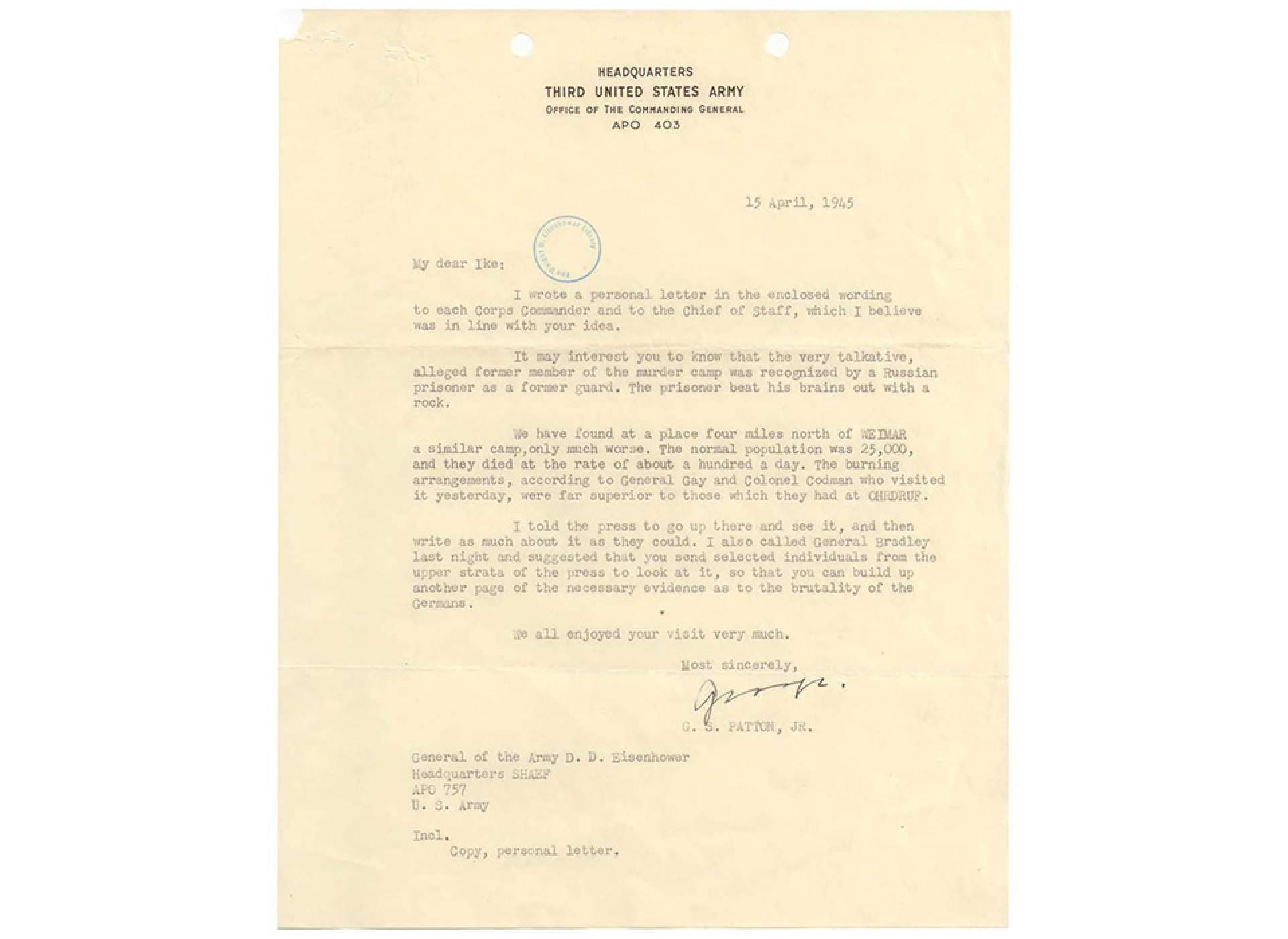


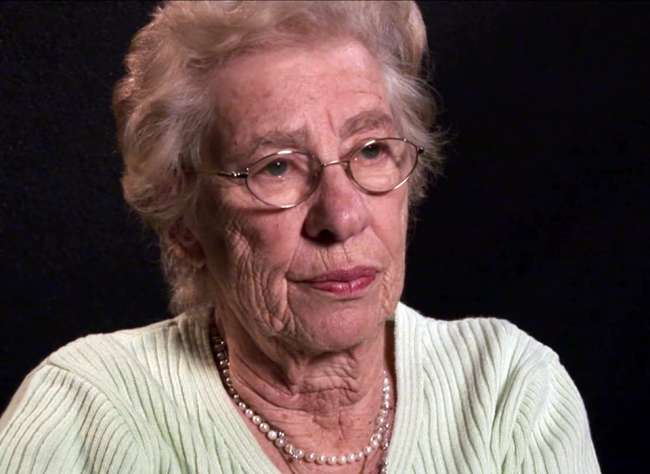



![Max Fuchs, New York City cantor, sings as Rabbi Sydney [sic] Lefkowitz, Richmond, VA, conducts the first Jewish services from Germany.](/sites/default/files/styles/max_650x650/public/2025-10/image1.jpg)


